A Guide to Western Riding
Posted by Mary's Tack & Feed on 28th Apr 2022
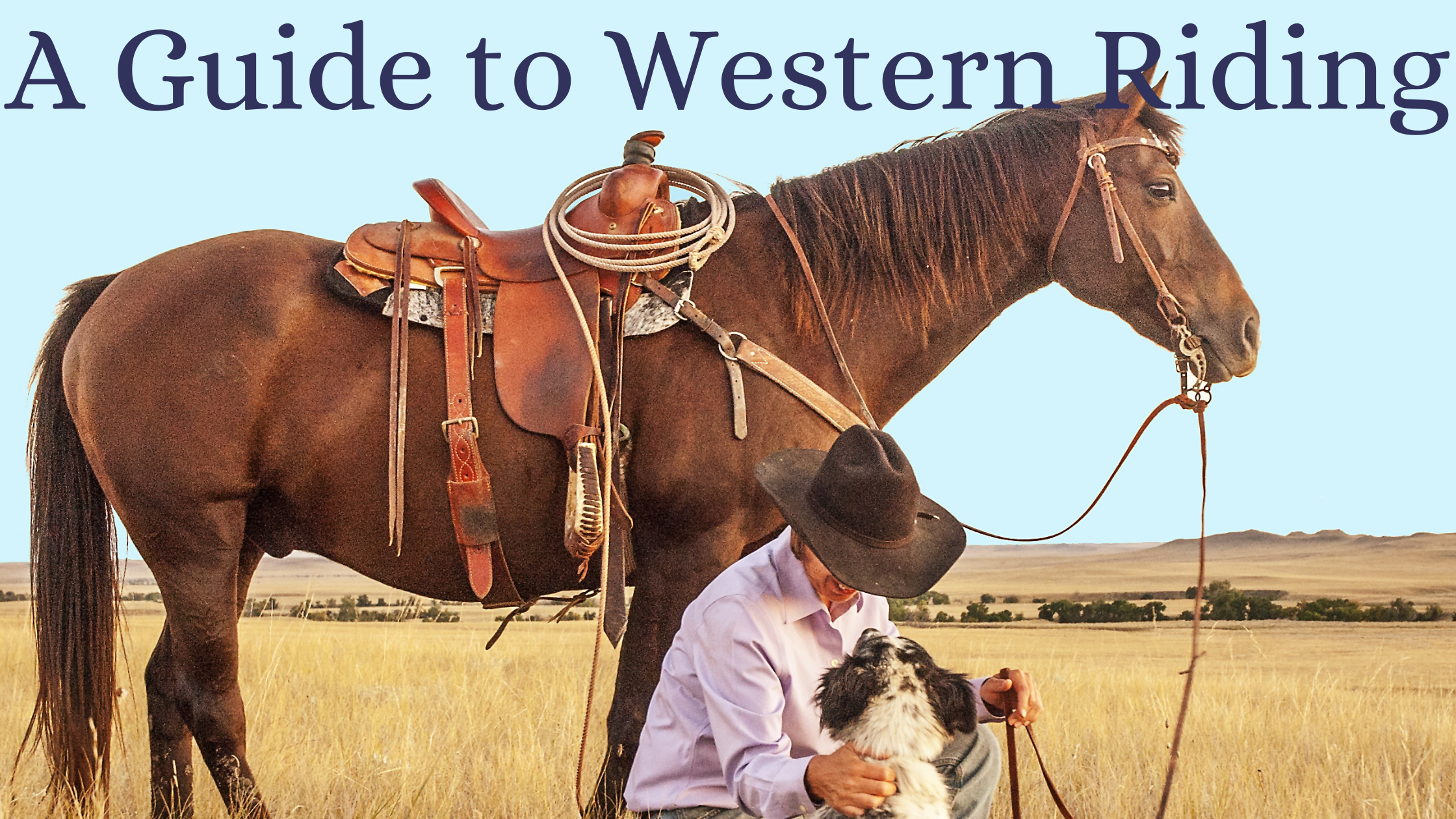
Do you want to know the basics of Western riding? Do you want to understand the difference between English and Western riding? Maybe you're just deciding which type of riding is right for you? Mary's Tack and Feed's Guide to Western Style Riding is an all-encompassing guide to everything you need to know about Western riding from the tack required to the different show disciplines and tips and tricks for when you're in the saddle. Read on to better understand the ins and outs of Western riding.
English vs. Western Riding
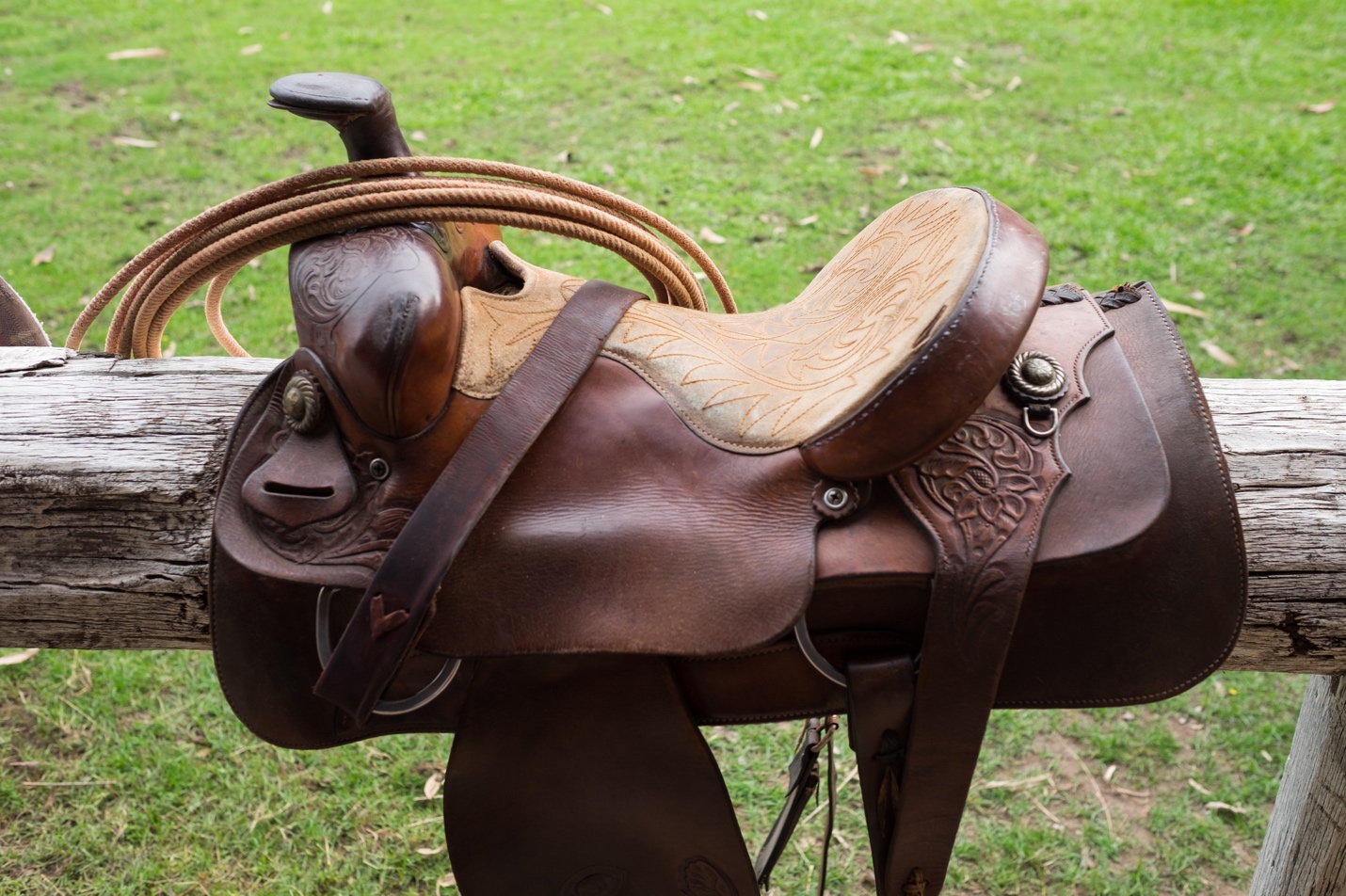
English and Western are the two common horseback riding styles, though they are very different from one another. While English riding includes showmanship competitions, such as hunter jumping and dressage, Western riding includes barrel racing, roping and rodeo-style competitions. The main difference in the tack is that the Western saddle features a horn at the front and has a much larger profile, while the English saddle is sleeker, smaller and much more lightweight. The two styles also involve different techniques from the rider.
When choosing whether to ride English or Western, the decision typically depends on the type of riding you hope to do. If you want to go on trail rides, work on a farm or ranch or compete in events like barrel racing, Western is probably the right style for you.
The History of Western Riding
If you guessed that Western riding originated in the American Southwest, you'd be correct. From the tack to the outfits, much of today's Western riding originated from cowboys working the land, herding cattle and working on ranches as early as the late 1700s. This style of horseback riding was brought to North America by the Spanish Conquistadors. Because these working cowboys had to spend long days in the saddle, Western tack was designed with a larger footprint and more comfortable riding style that allowed them to rope, ride and steer their horses more easily. Today's Western showmanship competitions and rodeo competitions stem from the jobs cowboys did on ranches from roping to reining and cutting, which involves separating one cow from a herd.
What Is Western Tack?
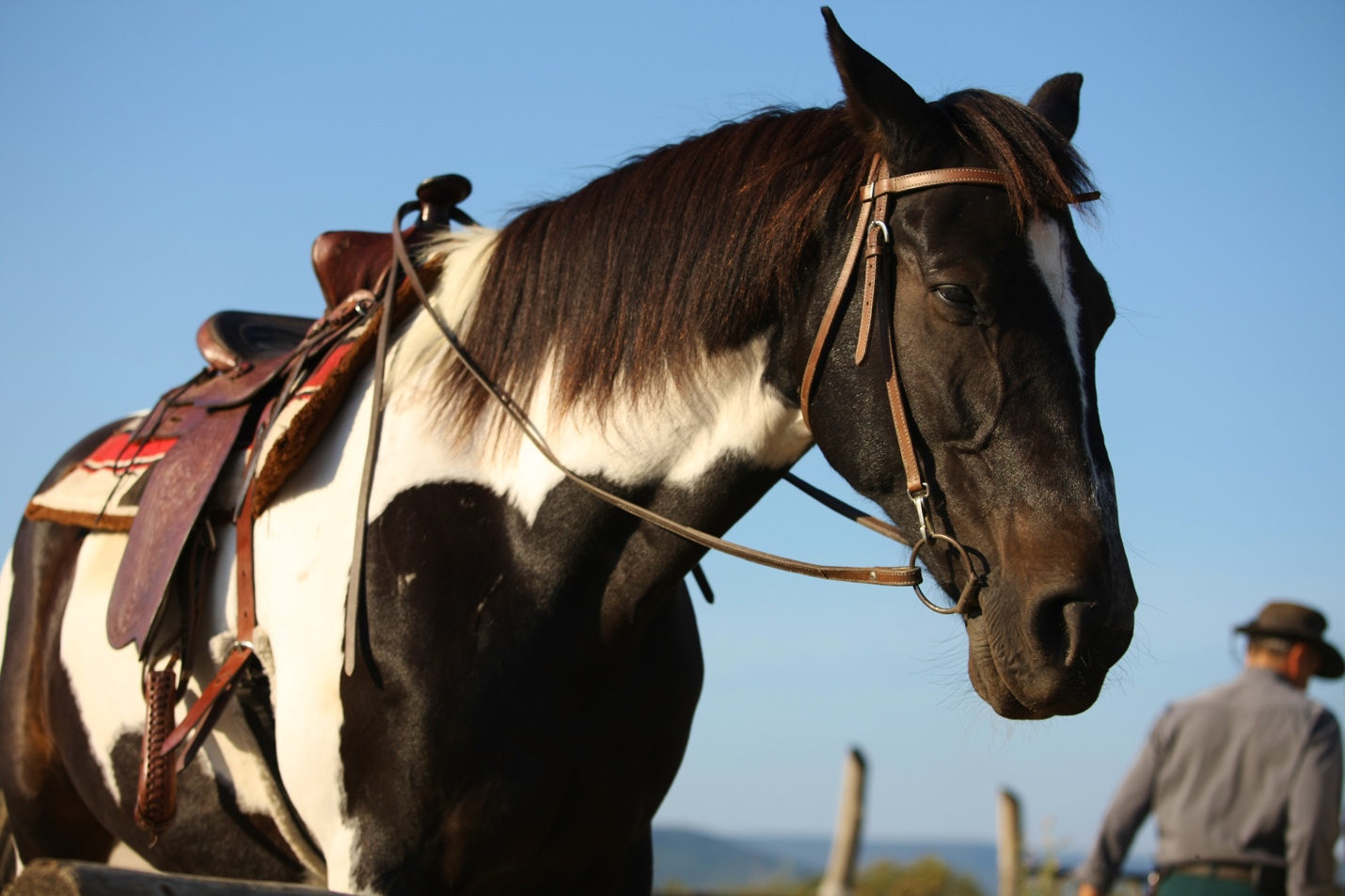
Western tack is built to accommodate the needs of Western riding. A typical Western tack setup includes:
- Saddle. The Western saddle features a horn at the front center that gives the rider something to grab hold of and also offers a place to hang a rope or lasso for certain types of Western riding. There are many types of cinches to consider when looking for a way to secure your saddle to the horse.
- Blanket. Western tack typically includes a larger blanket or saddle pad under the saddle.
- Bridle. Western bridles typically don't have nosebands, though you can add one if your horse needs it.
- Bit. There are many types of Western bits. Some of the most common are snaffle bits, shank bits, loose ring bits and curb bits.
- Reins. Western reins are typically split in two, making it easier to neck rein your horse.
What Do Western Horseback Riders Wear?
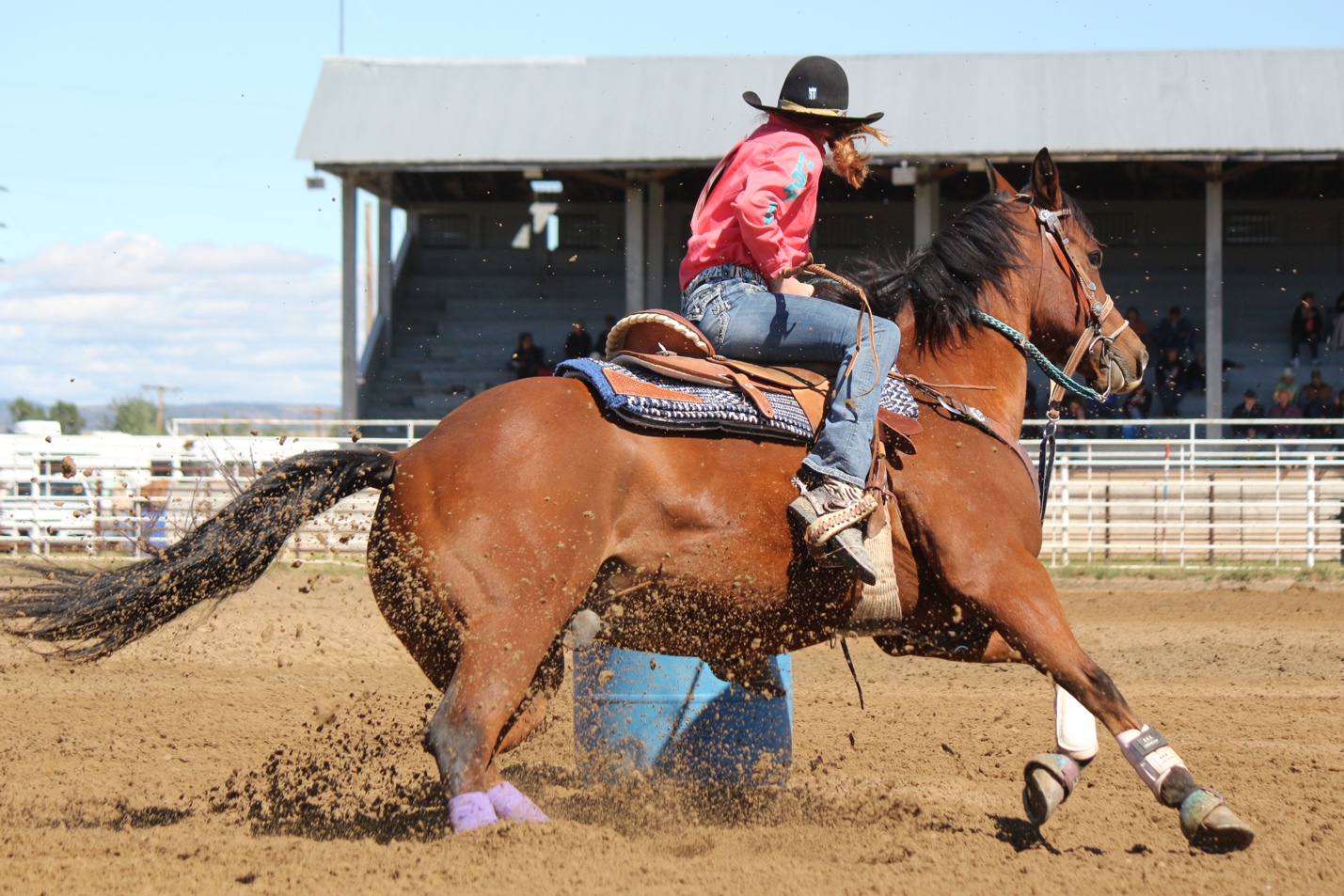
Western riders typically wear clothes that many would consider more cowboy-style attire, while English riders wear sleeker, more form-fitting outfits. Western riders often wear riding jeans to ride, and some wear leather or suede chaps over their jeans to offer added protection. They typically wear Western-style riding boots that feature pointed or square toes, a slight heel and often have ornate detailing. For more formal competitions, a Western show outfit would also consist of a button-down show shirt with a collar as well as a traditional Western hat.
Many people think of spurs when they think of Western horseback riding. Spurs are small, metal attachments that strap onto the backs of a rider's boots. Spurs allow riders to give firmer cues to their horses by nudging their sides to go faster or turn. Some spurs feature rowels, while others simply have flat metal wheels that offer quick contact against a horse's side.
How To Ride Western
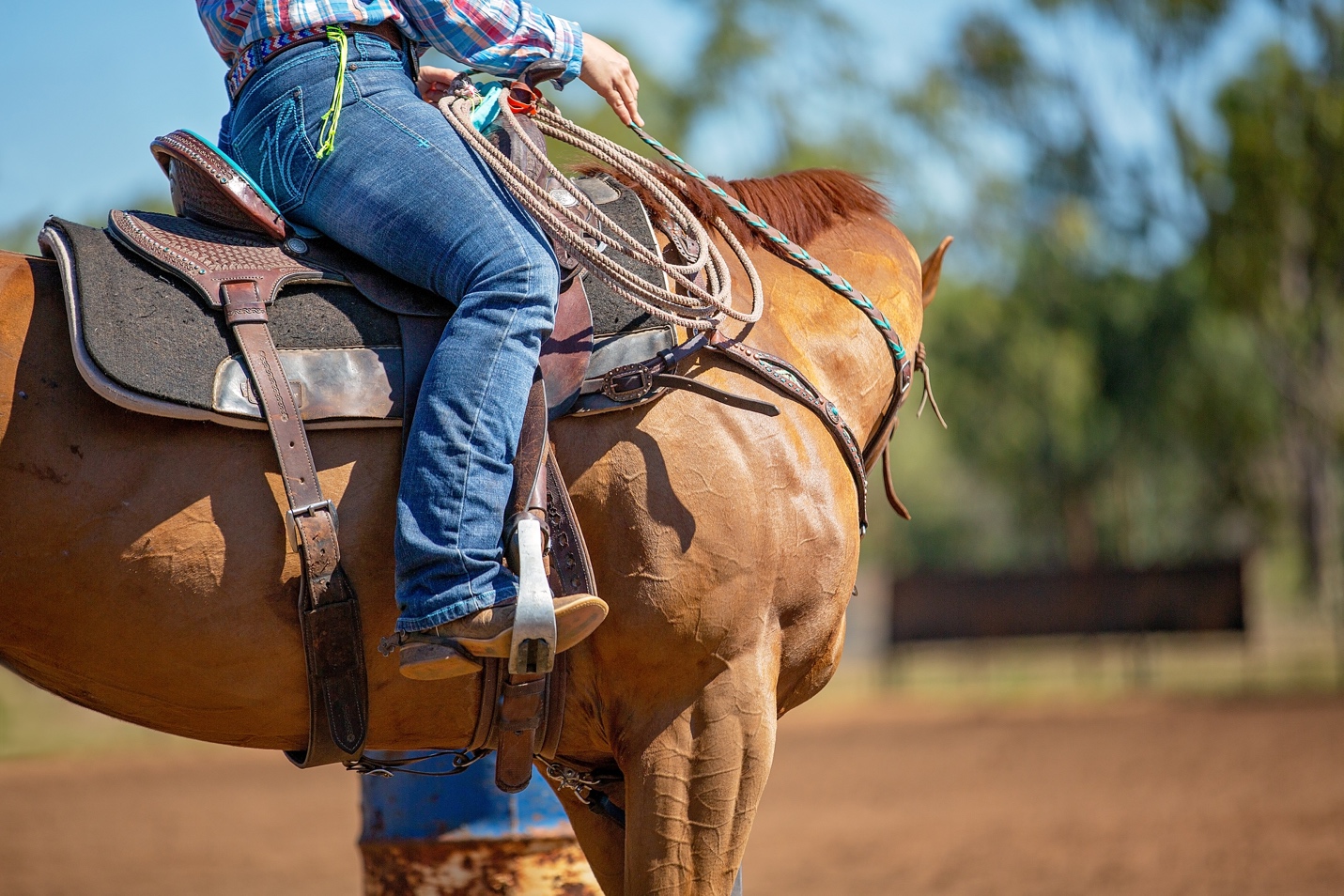
Now that you know about Western tack, it's important to understand the fundamental differences between Western riding and English riding.
English riders hold the reins in two hands, while Western riders only hold the reins in one hand. This allows the rider to move the horse while keeping one hand free to work, which is more traditional to Western riding. To make the horse turn, simply move your hand gently forward and to the side where you want to go. You can also adjust your body weight, as most well-trained Western horses can tell when you want them to turn based on slight shifts in either direction.
While English riders post in the saddle, this isn't required in Western riding. Instead, simply relax in the saddle and allow your body to move with the horse. Even when the horse is moving very fast, Western riders either stay fully seated in the saddle or stand upright and lean slightly forward.
The Four Horse Gaits in Western Riding
In riding, there are four "gaits," or speeds and styles at which the horse can move. Those gaits are:
- Walking. The slowest gait.
- Trotting. This gait involves diagonal legs moving forward at the same time.
- Cantering. A faster but still controlled three-beat gait .
- Galloping. This is the fastest gait. It takes four beats and generally involves the horse going as fast as possible.
Types of Western Riding Disciplines
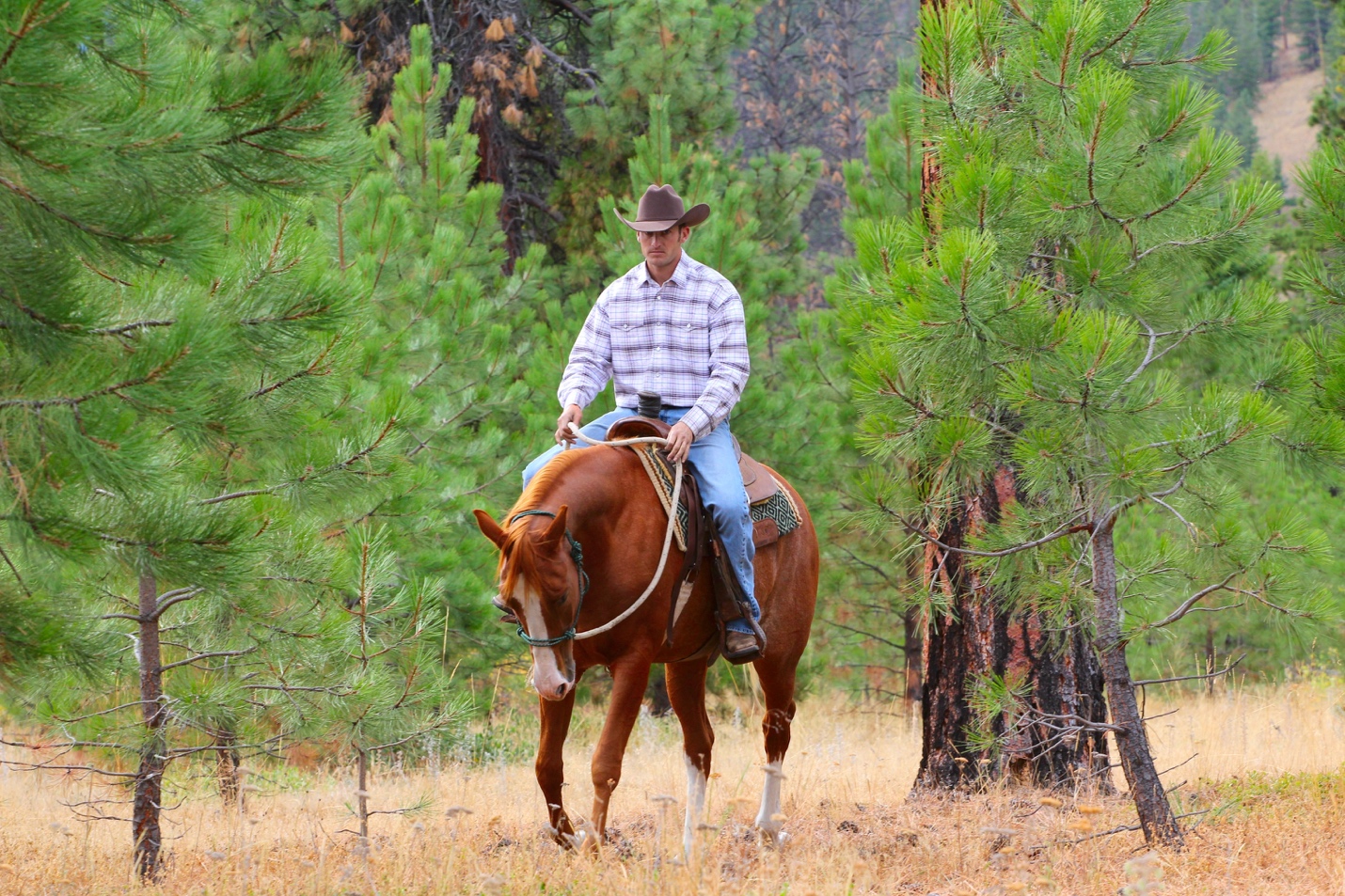
If you want to start competing as a Western rider, there are many routes you can take. For example, Western pleasure is a type of showmanship competition in which riders and their horses are judged on how well they communicate and perform with form as the determining factor for winning. For faster-paced competitions, Western riders may choose to compete in such events as barrel racing, pole bending, reining or roping. Western riding (and its corresponding tack) is also great for trail riding, which is a great way to see the outdoors on horseback from the comfort of a larger, more spacious Western saddle.
Whether you find yourself riding English or western, we'll be happy to get you all set with the right technical apparel and tack. Give us a call at 800-551-6279 if you have any questions.
